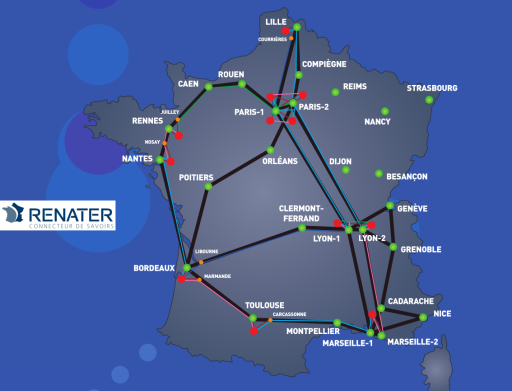The Indian Institutes of Technology, IITs, are the flagships of Indian engineering education. Getting into an IIT is the dream of every aspiring engineer in India, and each year over a million people take the entrance exam. But competition is fierce: with only 10.000 (2%) passing the exam, the IITs are among the institutes with the lowest acceptance rate worldwide.
Doñana National Park in Andalusia Spain is one of the world’s most fascinating nature reserves, a mosaic of ecosystems and home to unique and endangered species. The Park is connected to LifeWatch, a joint European e-infrastructure for biodiversity and ecosystem research, which enables scientists to access a vast array of data from multiple resources in real time to learn about the environment.
The Earth is a complex and dynamic system, and the inner workings of our planet have serious catastrophic potential for humans in the form of earthquakes and volcanic eruptions. Using e-infrastructure resources and supercomputers, a research group at the University of Oslo, Norway, is investigating the link between processes which occur deep in Earth’s interior, and those at the surface.
Participants at the 3rd TEIN/APAN Dengue Fever workshop on 24 January in Manila reaffirmed their commitment to join forces with research and education networks to combat Dengue Fever and other infectious diseases such as Zika. Plans include developing a digital platform to exchange data and working towards an outbreak prediction model.
A full set of one person’s DNA data requires a stack of 50 DVDs while a large study with 1,000 patients can be hundreds of terabytes of data. This makes it impractical to transfer genomic data using traditional methods, challenging to store it, and virtually impossible to use it without advanced research and education networks like CANARIE, sophisticated software tools, and high performance computing facilities.
Think of a dance performance in which the dancers, instead of sharing the same stage, are in different cities or even other continents. That is the mission of telematics dance, approaching dancers who are not necessarily in the same physical space, and creating other experience relations with the body and technological resources.
Wouldn’t it be nice to be able to solve problems before they occur? Unfortunately, predicting the future is difficult when it comes to complex systems like industrial production lines or wind farms. But a group of European researchers and industry experts have joined forces to build a system of sensors and computers that could help us solve problems in high tech environments.
As a widespread organization with research establishments, production facilities and nuclear power plants in locations spread over the entire expanse of India, The Department of Atomic Energy (DAE) requires a robust communication fabric and high speed connectivity for access to global mega science projects like the Large Hadron Collider, CERN, and the Synchrotron Facility at Grenoble, France.
A group of 50 Brazilian researchers shall partake in the Large Synoptic Survey Telescope project, deemed as revolutionary for Astronomy. Totaling R$ 1 billion in investments, the Telescope will be able to map almost half of the sky in six filters for a period of ten years and its deluge of data will be a huge challenge for information technology.
New technologies for deep sequencing of DNA and RNA are paving the way for unprecedented opportunities in genomic medicine. Norwegian medical scientists enlist the Abel supercomputer in Oslo to transform numbers and genome sequences into improved and more personalized cancer treatment.
Have you ever stopped to think about how weather and climate research influence your daily life? “This science has a direct impact on the daily lives of us all, from small decisions, such as whether to bring a coat or an umbrella or not, to government analyses, such as whether there will be enough water in the reservoirs of the dams of the hydroelectric power plants to produce electricity.”
In a unique collaboration, French research and education network RENATER will provide infrastructure connecting public administration sites from 15 ministries.













